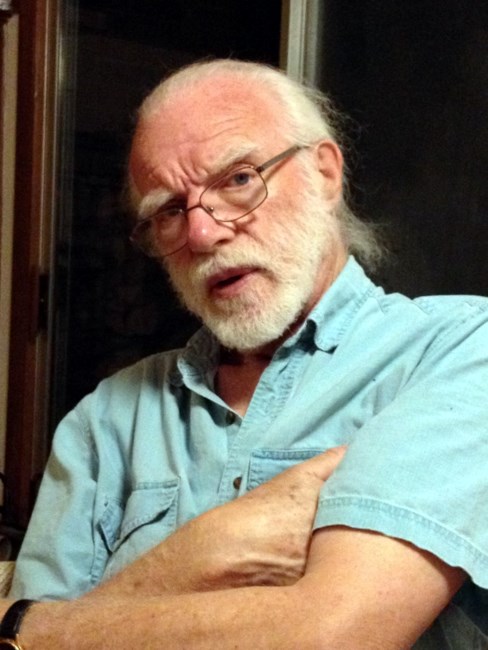
OBITUARY
Dr. Peter M Gardner
29 November, 1938 – 3 November, 2024

Peter M. Gardner died on November 3, 2024. He was born in England on November 29, 1938. His doctor father joined the Royal Navy in 1939, so the family lived together only during his leaves and when he was Falmouth Port Doctor, near war’s end. There, far from urban England’s nightly bombings, they swam on warm Cornish beaches and watched the quick, secret buildup of landing crafts in preparation for the decisive D-Day invasion of Normandy. Peter wrote as a child of going with his Dad and sister, Penny, out to an American landing ship on its final day there to treat an ill crewmember. Later, Peter also watched the surrendered German submarine U1023 being towed into the harbor. The next morning, they toured this trophy with other naval officers’ families.
In 1946, his father built a rural medical practice in, Canada. Five years later, his family spent a year and a half in a northern New Zealand’s Maori community, Kohukohu, with a proud, traditional Maori Chief, “Heke”. He and his sister went to a largely Maori school.
Returning first to Edmonton, Canada, they later moved to Kansas in 1955, for his father to train in Psychiatry. Peter did undergraduate studies at Washburn University and the University of Kansas. He then earned a PhD in Cultural Anthropology at the University of Pennsylvania in 1965, trained mainly by A. I. Hallowell, Ward Goodenough, Anthony F. C. Wallace, and Paul Friedrich. Stimulated by Hallowell’s hunter-gatherer research, Peter studied Tamil then did 19 months of dissertation research with Paliyan hunter-gatherers, in south India, funded by the Ford Foundation. They were peaceful and friendly, yet taciturn. Their egalitarian life was striking with no one having authority over anyone else, including over his or her own spouse or child.
Peter taught first at the University of Texas, then moved to the University of Missouri in 1970, where he taught courses on Indian Civilization, gender, and culture theory. From 1977-80, he was Department Chair and was later elected to Faculty Council and Graduate Faculty Senate. He also found time for drawing, and art photography.
In 1973-74, Peter and linguist Jane Christian, accompanied by families, did a 15-month study of individualistic hunting and gathering Dehcho Dene, in Canada’s Northwest Territories, funded by the National Science Foundation and National Museums of Canada. Ethno-semantic study and linguistic study of language acquisition of 17 children, made it possible to explain puzzling Paliyan findings and draw general conclusions. Importantly, it gave a new way of thinking about a cultural” way of life”.
Peter did two more projects in India, the first along with family. He spent 13-months in 1967-8 studying Hindu concepts, of power and ritual purity that might shape Paliyan acculturation. His study of 12 traditional Tamil sculptors at work in their studios refutes art historian Kramrisch’s stance that sculptors just copy earlier works, causing the art’s ”lingering death through six or seven centuries of iconic output ”. In actual fact, they spend years studying palm leaf manuscripts. Peter studied sculptors in their studios, one of whom had carved an extraordinary, non-traditional piece, then took Peter out to see some works from many centuries earlier made with the same degree of freedom and originality. As a scientist, Peter held that one should not look only at select art works from museums, to ascertain validly how a culture’s art in general had been produced. The American Institute of Indian Studies funded both projects.
Peter wrote in his memoir, Journeys to the Edge, that he felt “calmness” in nature - an avenue of ancient trees beyond his granny’s garden being a favorite place to play when he was five. The forests he worked in were relatively unspoiled and their inhabitants lived by a cardinal rule: Respect Others (including spouse and children!).
He produced 80 publications, two done jointly with colleagues.
Peter enjoyed both writing and teaching. His memoir, Journeys to the Edge, was a runner-up for the 2006 Scientific Memoir of the Year – a national award. And he was the “Alternate” for the 1990 National Award for Distinguished Teaching of Anthropology, which noted his “unique and stimulating courses that invite questions about things we conventionally take for granted.”
Since high school, Peter admired Japanese art. So, he studied Japanese in 1982 at Monterey Institute and spent a sabbatical learning calligraphy and photographing Kyoto’s Buddhist gardens.
Peter is survived by his long-time partner, Noor Azizan-Gardner, Founder of Baru Global Group; three children, Heather Gardner-Muir, a poet and teacher, Eric Gardner, who works in artificial intelligence, and Andrew Gardner, an architect, plus 4 grandchildren: Cailin (another teacher) and Kelsea Muir, and Nathan and Emily Gardner. Another grandson will be arriving in December.
His ashes will return to Cornwall, England.
The family would like to thank the wonderful Gentiva Hospice team and especially Mary Rose, Erin, Dee and Sadie. We are also thankful to his incredible caregivers, Chris and Mary. And we are especially thankful to his physical therapist, Shane, for giving him hope every day.
In lieu of flowers, the family would like to ask that donations be made in Peter’s name to Médecins Sans Frontièrs (Doctors without Borders) at https://donate.doctorswithoutborders.org.
A visitation for Peter will be held Saturday, November 9, 2024 from 2:00 PM to 3:00 PM at Memorial Funeral Home, 1217 Business Loop 70 W, Columbia, Missouri 65202, followed by a memorial service at 3:00 PM.
Peter’s Celebration of Life will be held later in 2025.
Show your support
Add a Memory
Share Obituary
Get Reminders
Services
SHARE OBITUARYSHARE
- GET REMINDERS
v.1.13.0